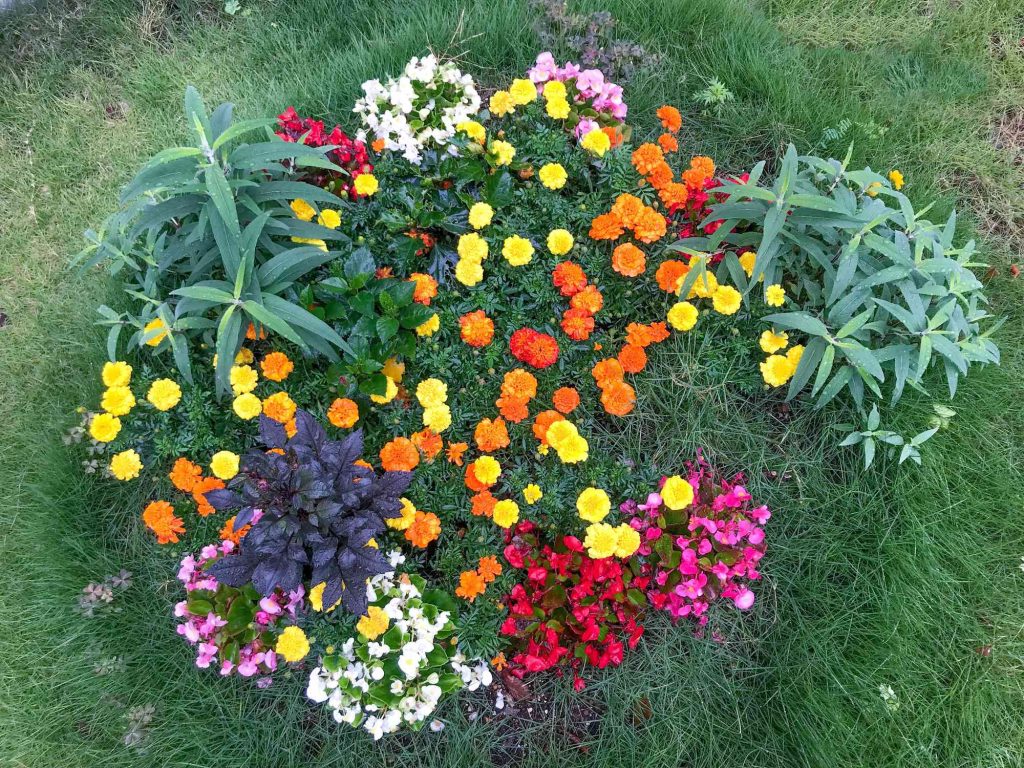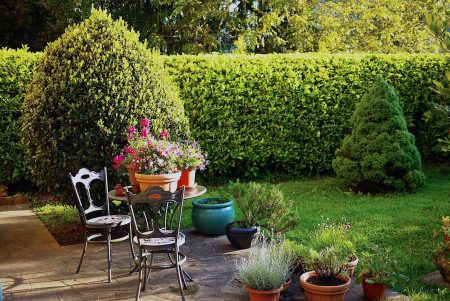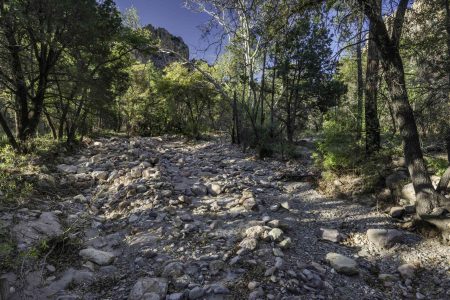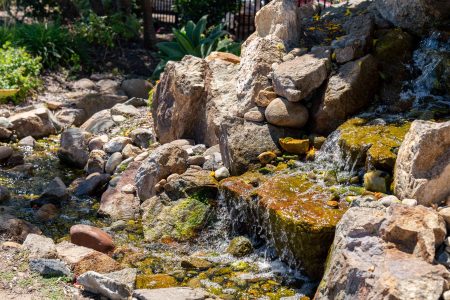A rain garden is a landscaped, shallow depression planted with native plants that captures, temporarily holds, and filters stormwater back into the ground, The rain garden will prevent stormwater from running off and ultimately reaching nearby streams, rivers, and ponds. Rain gardens are often misunderstood, with many misconceptions about what they are and why you would want one. Maybe you’ve heard rain gardens are important for the environment, or you’ve heard that they are gardens that belong in soggy areas in your yard.
It’s true that rain gardens are eco-friendly, but there’s so much more to this great garden project that would make you want one in your own yard.
What Is a Rain Garden?
A rain garden is, at its core, a garden that collects rainwater, holds it for a limited amount of time, and filters it before slowly releasing the water into the ground. It collects rainwater from impervious surfaces like roofs, pavements, driveways, patios, parking lots, or waterlogged yards, allowing the water to slowly seep back into the ground, preventing runoff from reaching local waterways.
Installing rain gardens in our communities can be essential for the health of our waterways. As our green spaces become overdeveloped, rain gardens will become vital. They play a huge role in guarding our waterways against nonpoint source pollutants (NPS) contained in runoff water.
What Are Nonpoint Source Pollutants?
Nonpoint source pollutants (NPS) are pollutants that are picked up and carried to waterways by runoff (rainwater, melting snow) flowing above or below ground. Examples of NPS include motor oil, gasoline, fertilizer, chemicals, herbicides, pesticides, and pet waste.
Benefits of a Rain Garden
These specialized gardens have features that make them distinct from your typical flower bed. The unique nature of a rain garden offers many advantages:
- A rain garden is your personal way to practice environmental stewardship.
- The primary purpose of a rain garden is to reduce runoff, so it should be placed in a location enabling the garden to collect water.
- A rain garden will provide food and shelter for pollinators, such as butterflies, and offer protection for songbirds and other wildlife.
- Rain gardens can control soil erosion.
Choosing Plants for Rain Gardens
Select only native plants (shrubs, perennials, and annuals) for your rain garden. Native plants can control erosion by stabilizing soils, increasing the recharge rate of water, and filtering any contaminants in the runoff before it enters the groundwater.
The importance of using native plants can be seen in the following comparison. Compare the watering needs of a native plant like big bluestem grass (Andropogon gerardii) and a non-native plant like Kentucky bluegrass (Poa pratensis). Big bluestem grass roots can grow up to 12 feet deep, whereas Kentucky bluegrass roots will only grow a shallow 1 to 2 feet deep. A deeper taproot means the plant does not need as much watering as one with shallow roots that need abundant watering to survive, which will create pooling water and runoff due to lack of absorption.
When installing a rain garden, you are not creating a pond; ideally, the garden should drain within 24 hours after a storm.
How Does a Rain Garden Work?
The principle of how rain gardens work is simple. You have likely seen water run downhill before and witnessed a puddle on a lawn slowly disappear. A rain garden creates a channel to an artificial depression or serves as an artificial depression, where water will be able to collect and enter the ground slowly.
The rate at which water is absorbed is controlled by estimating the amount of runoff entering the rain garden. The amount of runoff determines the depth of the depression and the size of the rain garden. Absorption will be aided by adding native plants with deep root systems or amending the soil if it is not ideal.
Perform a simple water percolation test to determine your site’s soil drainage rate before you start working.
How to Plan a Rain Garden
Creating a functional, aesthetically pleasing rain garden won’t require you to hire a landscaper or environmental scientist. With the help of a few assistants (friends, family members, neighbors), you can finish the project over a weekend, but it will require some planning.
Budget
Expect to spend around $5 per square foot on the project. Most of your budget will be spent on plant material. Shop at local nurseries specializing in native plants or grow your own from seed to save money. Look for local plant sales that offer native plants for sale; many extension services hold spring plant sales that will offer plants perfect for rain gardens. By installing the rain garden yourself, you will save a good deal of money compared to paying someone to install it for you.
Site Selection
The most important consideration when planning a rain garden is site selection. Locating your rain garden in a spot that receives little to no water or too much water defeats its purpose. You want to choose a location between two impervious surfaces, for instance, a roof, a lawn, and a street. Examine where the rainwater pours off the roof via downspouts, watch how it flows to the lawn, and see how where the runoff water enters the street.
Plant Selection and Placement
To design and lay out your garden, determine its depth and size, estimate the runoff amount, and use the soil percolation test mentioned above. Plant placement must allow for water uptake and optimum plant health.
On the very edge of the garden, plants must be able to tolerate dry conditions. Plants installed along the slope should be able to thrive in conditions that are sometimes dry or wet. In the deepest section of the rain garden, known as the base, place plants that can handle wet soil for an extended time.
Warning
Before beginning any project that requires you to dig, call your utility companies first to identify the utilities in the area. The utility companies will use spray paint or colored flags to alert you where the utility lines are and to avoid digging in those locations.
-
Are rain gardens worth planting?
If you are concerned about water conservation, then a rain garden could be worthwhile. A rain garden allows for more water to soak into the soil, preventing chemicals from seeping into waterways.
-
Where is the best place to put a rain garden?
Locate a rain garden at least 10 feet away from your home to avoid damaging the foundation. But it should go in an area where you can easily capture water from a roof, lawn, or paved area.
-
Do rain gardens attract mosquitos?
Since a rain garden drains in 12 to 48 hours, it does not attract mosquitos or pose a breeding ground for the insects.
Read the full article here









